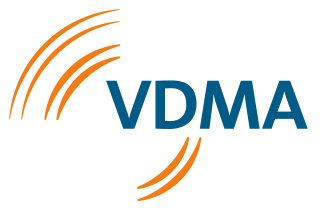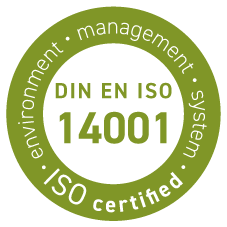IoTDay is an opportunity for the IoT Community to show that it cares for people, for the environment, for animals … and for machines as well.
Our Chief Innovation Officer Rob van Kranenburg is on a large-scale field of interest. The focus of his research and development work is the Internet of Things, the technology for everything that is mostly mobile connected to the internet and exchanges location or status data. To mark the occasion, we are dedicating the fourth episode of his “Resources” to this topic. Because on the ninth of April, the network community celebrates IoT Day 2023, which Rob himself founded 14 years ago. In the interview, he recalls the beginnings, shows current trends and sheds light on the connection between regulation and cyber security.
Q: We´re proud to have the founder of the IoT-Day here, today and permanently! What was your and your collegue´s initial idea behind the IoT itself?
A: Well, I started the IoT Council in 2009. At that time I was invited into the IoT Expert Group headed by Gerald Santucci, a very broad group of European experts that helped pave e the way for GDPR and a lot of IoT initiatives. These was around the same time that the European Parliament and the Commission were sure they were on to something potentially game changing: “One major development in the coming years will be to progressively connect not only computers but also machines and a variety of physical objects, thus creating the ‘internet of things’. These can be simple everyday items like yogurt pots that record the temperature along their supply chain, or two prescription drugs that warn patients of a possible incompatibility.” (Excerpt from the EU Commission’s publication of June 2009, which is well worth reading and almost internet-historical)
Q: When did you develop the idea for the IoT-Day?
A: There was a sense of urgency among the IoT practitioners and the RFID/IOT unit of the European Commission. It was then that I started thinking that we should try to communicate this to larger groups of people who were unaware of the connectivity behind their everyday practices. And so in 2010 I started the #IoTday as a day on which to create conversations between experts and an unsuspecting wide audience. To look at the variety and reach of the day you just have to click through some images since 2010.
Q: How is the IoT-Day organized?
A: An event is scheduled by the organizers. They set up a meetup or a meeting or a conference on or around April 9, go to www.iotday.org and schedule the event there so we can publicise it and advertise it on social media.
Q: How did the IoT-Day develop and emerge in the last 13 years and what have been milestones on the run?
A: The IoT-Day has shown some insights in IoT shadowing internal developments. From 2010 to about 2017 the focus of the events are mostly on technical issues, standards, programs, languages, type of connectivity etc. Very prominent were activities using Arduino or other DIY open source technologies as people were building their own connected lamps, fridges, home automation systems. After 2017 the field matures and gets divided into verticals and domain. You see work being done in smart health and wearables in the BAN, the Body Area Network, in the home with the NEST and the camera’s (the LAN, local area network), in mobility with bikes, cars, planes and trains (the WAN, Wide Area Network) and in smart cities where the furniture becomes smart and data is being pulled or attempts are made to pull data from the city silos to create a city dashboard. After 2017 the focus is on the relationships between Big Data, IoT and AI and what that means for work and everyday life. The data leaks have matured and are being made as trustworthy as they can, AI in the form of machine learning and deep learning, the first steps to Midjourney and ChatGPT, and IoT focused on connectivity -5G and integration and implementation.
Q: Today we have thousands of whatsoever-days in the IP-segment. Is that IoT-Day still recognized and being celebrated intensively?
Throughout the years the number of events have remained constant between 40 and 60 each year. That shows that there is a solid group of people who want to highlight their work or reach out or communicate an idea on IoT-Day. The events range from Conferences, 24 hour timezone pre recorded sessions, meetings in bars, meetups that meet regularly and schedule a specific event on or around IoT-Day to product presentations. I always do a local meetup in Gent or meet with people in the Parc. One of my best sessions was in my own apartment building where we invited all the neighbours.
Q: What happened?
A: That session basically had everything that I hoped that the IoT-Day can do. The two main questions my neighbours came up with was “Why?” and “1984”. The “Why?” is an important question. Personally it was the reason for me to get involved in what was then called ambient intelligence or pervasive computing or ubicomp or things that think. Around 2000 I also asked myself after having first heard about this paradigm shift from an analogue to a digital and hybrid world: why would you want to classify all things as data and then connect them to a server and later to each other? It turned out that for the engineers this was simply a wrong question. They were not thinking about the why but the what and how. The more data you have the better the datamining, the better the forecast.
“1984”, so the question surveillance or progress, was always in the conception of connecting things and people – and my neighbours – worried about privacy and control. What if everything is digital, silent and not visible, can we then still see into what is happening in the backend? What kind of algorithms are at work in the data analysis, are they biased? Towards what? What if one party gets access to all or most of the data? These are the real questions and most of the neighbours were very worried after my presentation. And rightly so.
Q: Can we get out of this one?
A: Of course. But without a proper and real thoughtful governance these dystopia scenarios become quickly real. In Europe we have lost control over most capabilities (privatised) so the fear is much more on the side of all-knowing companies (mostly American) who track and trace you through your objects. But what we do have is regulation and that is the strongest weapon there currently is to tame the potential capabilities of IoT, Big Data and AI. GDPR works for personal privacy. The Digital Services Act makes sure online platforms have to abide by certain rules. The Cyber Resilience Act tries to regulate security for IoT devices so that they can not be easily hacked and turn your fridge into a botnet. In themselves these regulations are not sufficient but taken as a whole they form a good starting point.
Q: How can we stay in control of the situation?
A: In a digital world we need a basis for making decisions. During the centuries we tried different models. That of the warrior king who ruled by his sword and simply put down anyone with different ideas. We had the priest poets who decided who was to go to heaven and who not and took that as a basis to rule everyday life. We also had the lawyer prophets who ruled by intelligence and made sure anyone with other skills stayed down. I think the time has come to base decision on real time data streams. Yes we know that the data coming from the sensors is not ‘objective’, it is also an interpretation but I think it is the best basis possible, the best we have to tailor the big questions of our time starting with Climate Change.
More background and exciting contexts about the emergence of a very special IoT Think Tank here.






